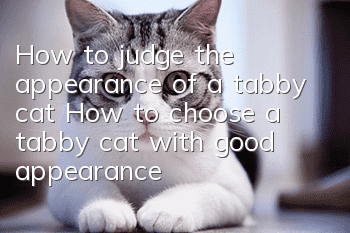Do all cats have gills? What is the best food for cats with gills?

Not all cats have gills. The gills in cats are related to the breed. Cats that are prone to gills include British Shorthair cats, while Siamese cats and other cats do not have gills. Cats can be properly fed high-protein foods such as boiled beef and chicken breasts, which can play a supporting role. It is best to neuter male cats, as estrus is not good for cats with gill hair.
Do cats all have gills
Not all cats have gills. The gills in cats are related to the breed. Breeds that are prone to gills include British Shorthair, Garfield, Chinchilla, etc. Most of the time, they appear in a round shape. Siamese cats, hairless cats, and Russian blue cats do not have gills. Don’t pursue gills too much and cause the cat to become overweight and affect its health.
When do cats have gills
When a cat reaches 3-5 months of age, its cheeks will gradually begin to grow flesh, and will slowly take shape at 6-8 months of age. Hair growth is a long process and usually rarely changes after adulthood. During the gill stage, if the cat's stomach and intestines can adapt, high-protein foods such as boiled beef, boiled chicken breast, and egg yolk can be appropriately fed, which can serve as dietary supplements. It is not recommended to feed raw meat. Cats with poor gastrointestinal adaptability are prone to diarrhea and parasite infection.
Sterilization is beneficial to hairy cheeks
If you are raising a male cat, it is best to take the cat to be neutered in time. Male cats will be more excited during the estrus period and will consume a lot of energy. If it cannot be replenished in time, it will easily cause the cat to become thinner, which is not good for the cat's gills. You can take the male cat for sterilization when he is 6-8 months old.
- What are the benefits of cats eating chicken liver? The dangers of cats eating too much chicken liver
- Is catnip the same as regular mint?
- What is the enclosure behavior of cats? How to correct the enclosure behavior of cats!
- Why does a cat have a bulging belly?
- Feline Herpes Virus Symptoms
- Is it normal for cats to have hot paws?
- How old do cats need to be vaccinated?
- Do you need injections for cat scratches?
- What should lactating cats eat to supplement their nutrition?
- What does it look like when a hen squats on the belly of a cat?



